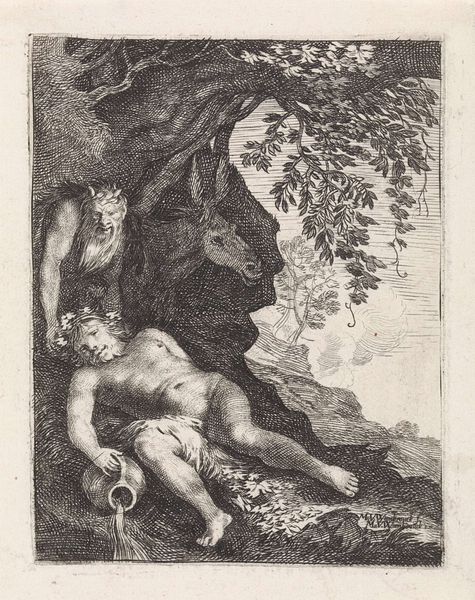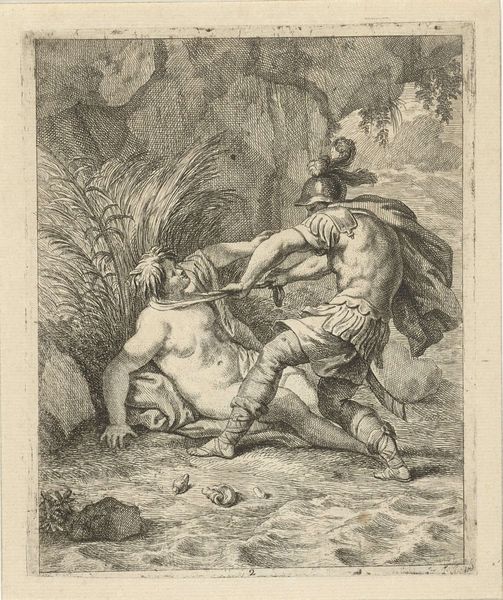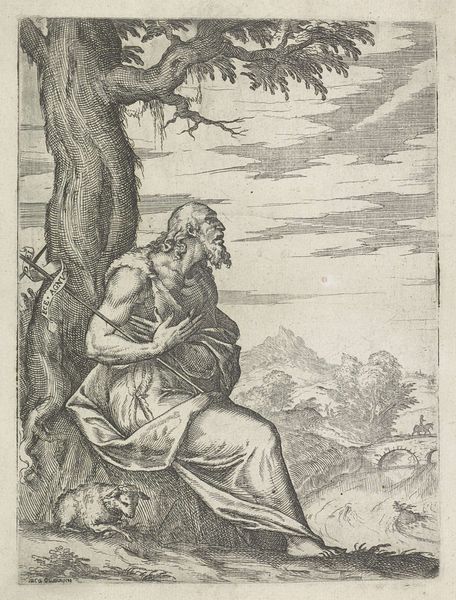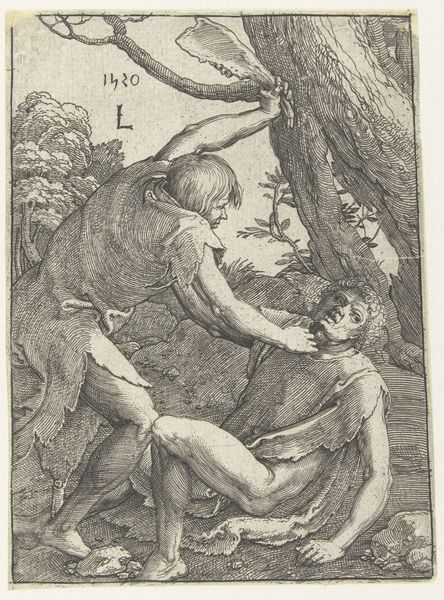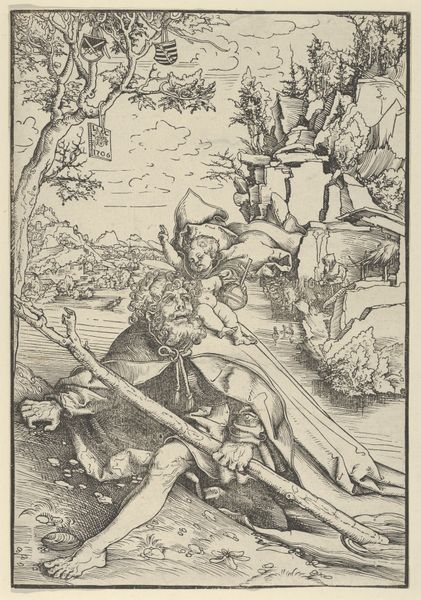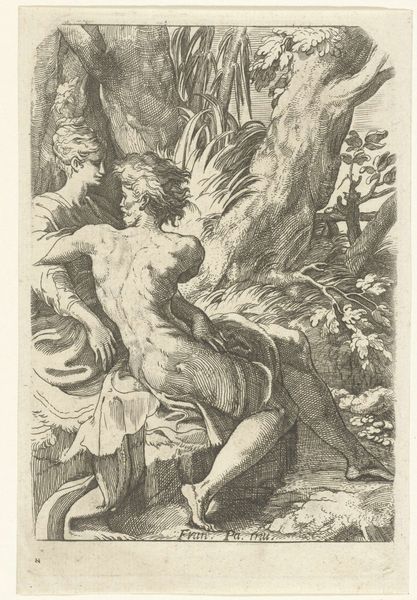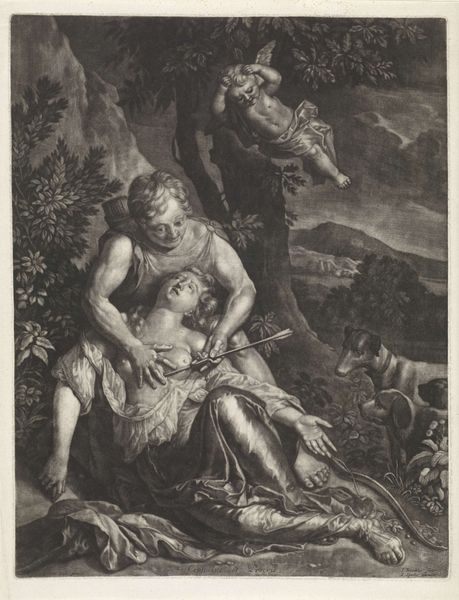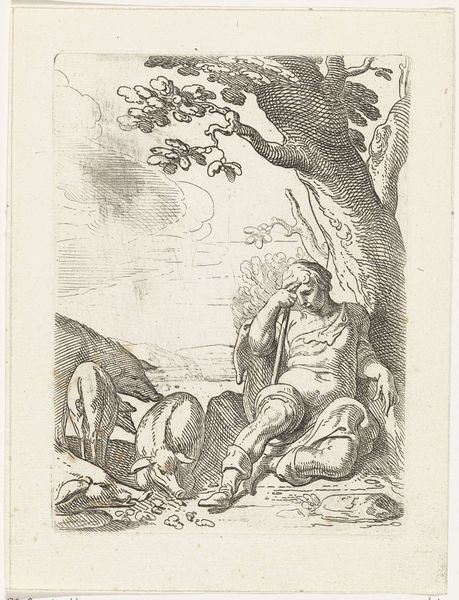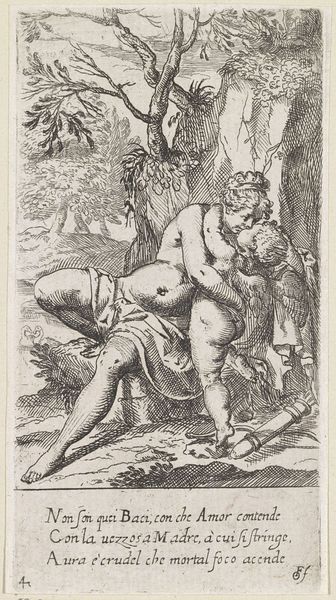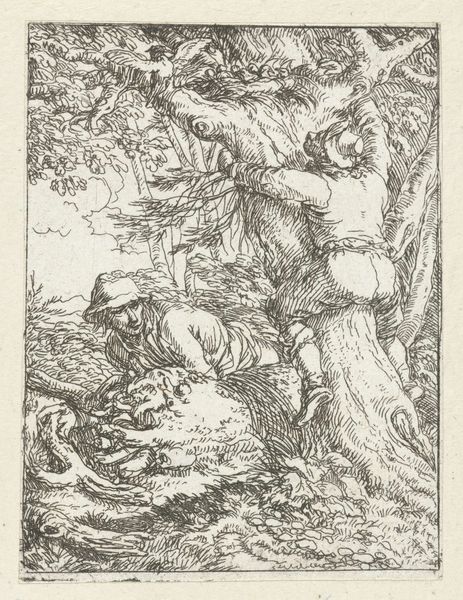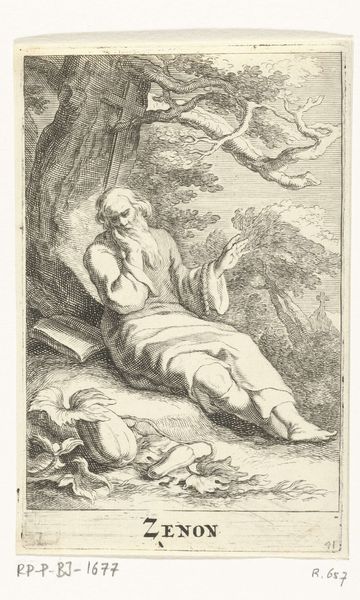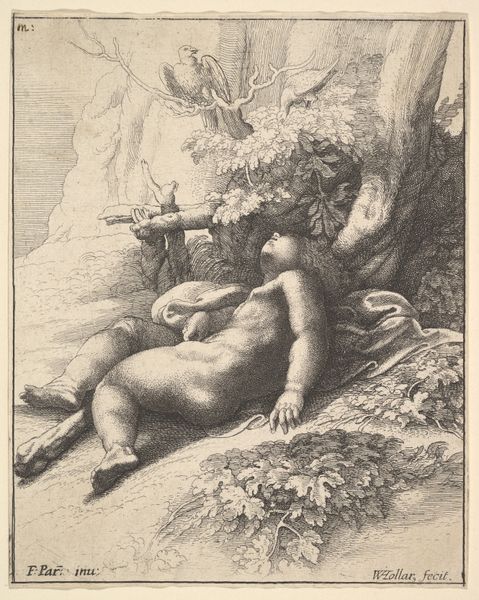
print, engraving
# print
#
landscape
#
mannerism
#
history-painting
#
nude
#
engraving
Dimensions: height 175 mm, width 135 mm
Copyright: Rijks Museum: Open Domain
Curator: Let's discuss "Jupiter and Callisto," an engraving created by Cornelis Bos, sometime between 1537 and 1555. It’s currently housed in the Rijksmuseum. Editor: My first impression? The light! The stark contrast creates such drama. It's not a happy scene, is it? There's a tension I can feel. Curator: The narrative stems from Ovid's "Metamorphoses." This print, typical of Mannerism, reveals a loaded moment. Jupiter, disguised as Diana, seduces the nymph Callisto, who has vowed chastity. Think about the power dynamics at play; the deception, the violation of consent. It speaks volumes about patriarchal control. Editor: And consider the making of this. An engraving requires precise handwork; lines etched into a metal plate, inked, then pressed. The labor! Each precise line built an environment ripe with seduction. You see the detail in Callisto’s hair and dress, clearly influenced by craft techniques. It points to not just subject matter but also a specific production culture. Curator: Absolutely. The medium becomes part of the message. Engravings, widely disseminated, served as visual propaganda. In this case, it arguably reinforces traditional, and ultimately harmful, narratives about female agency and divine privilege. We can see the visual culture complicit in systems of domination. Editor: You are correct that the composition guides my eyes precisely to the figures' interplay. The print technique and wide availability further underline a systematic message to a broadening public. The textures and light help expose its underlying motives to perpetuate control. Curator: Right, it makes you ponder the original intent and audience. Editor: Analyzing materials gives agency to that study, as the making and display add a new perspective to its history. Curator: Indeed. Through this lens, the print reveals the insidious ways art and material culture can perpetuate harmful ideologies and begin discourse around female agency, identity, and historic abuses of power. Editor: And the close looking, contextualization, and social understanding transforms art analysis.
Comments
No comments
Be the first to comment and join the conversation on the ultimate creative platform.

